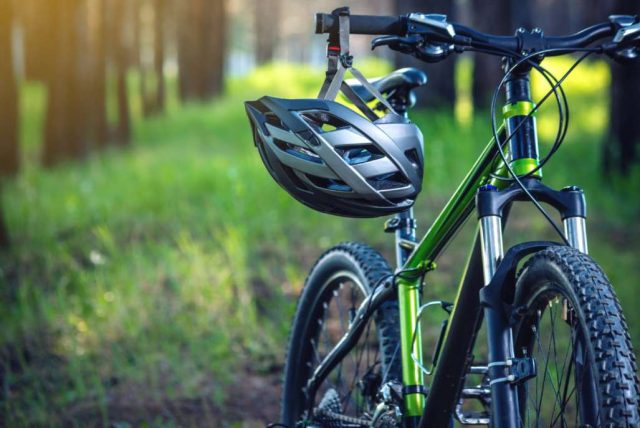Most residential streets are open to cars and bicycles. So if you want to save on today’s astronomical gas prices and get some more exercise in, riding a bike is a good way to do it.
But biking also comes with risks. Obviously, you’re not as protected as you are in a car, so you’ll need to be extra careful not to get in an accident. In 2020, 938 bicyclists were killed in traffic accidents.
If you ever happen to find yourself in a bike accident that involves a vehicle, consult an experienced auto accident lawyer. They’ll help you know your rights and navigate complex legal and insurance claims.
That said, it’s best to avoid getting hurt altogether. So here are 11 safety tips so you can avoid getting in a bike accident – or at least minimize the damage:
- Get the right size bike
Not getting in a bike accident starts with having the right bike. If the bike is too small or too big, it will be harder to control.
So when you choose a bike to ride, follow a sizing chart. Bike sizes are usually based on your height. But as a rule, you want to leave two inches between the bike seat and your groin when standing straight beside it.
- Check your brakes
Riding with brakes that don’t work is dangerous. So make sure to check them before each ride.
An easy way to do this is to lift the wheel off the ground, spin it, and then press the breaks to see if the wheel stops turning. If it doesn’t, try tightening the breaks. If that doesn’t work, you may need to replace the brakes or take your bike to a bike shop to get it checked out.
- Use a helmet
Helmet laws vary by state and age. But you should wear one even if you don’t have to.
Wearing a helmet reduces the likelihood of a head injury by 48% and the likelihood of a serious head injury by 60%. It can also protect your neck and face. So there’s really no reason not to wear one.
That said, never use a damaged helmet. Helmets are designed to collapse on hard impact to absorb the force. So if a helmet has already been in an accident, it won’t be effective anymore.
- Use lights and reflectors
Most bikes come with reflectors in the front, in the back, and attached to the spokes of the wheels. If yours doesn’t, be sure to install them. They’ll help other vehicles see you better.
The same goes for bike lights. You should have a front and rear light not only to help you see but to help other drivers see you. Plus, it’s the law when riding at night. And even during the daytime, lights will make you more visible.
Your front light should be yellow, your rear light should be red, and both should be bright. Get some with flashing settings to make yourself even more noticeable. (1)
- Wear bright or reflective gear
Bright or reflective gear can also make you more visible. This could include a reflective vest, a headlamp, or even just bright-colored clothing. Anything to help you stand out.
- Stay in the bike lane
Bike lanes are there for a reason. So make sure you ride in them whenever they are available. If none exist, you have the right to use the road. Just be careful and don’t ride on the sidewalk as these are meant for pedestrians only.
- Use hand signals
Just because bikes don’t have blinkers doesn’t mean you don’t need to use turn signals. Whenever you are about to turn or merge, stretch your arm out left or right to indicate what you are about to do. Be predictable. Your turn signals should be clear and timely.
- Use a bicycle mirror
Bicycle mirrors are an optional accessory but very useful. They let you see what’s coming from behind, so you know to wait before turning or to get out of the way.
- Keep both hands on the handlebars
Some folks like to see if they can ride with one or no hands on the handlebars. Or hold a cup in one hand and steer with the other.
Though you may be tempted to ride like this, it’s not worth it. Riding without both hands on the handlebars is incredibly risky.
You never know when a pothole or an uneven road surface could appear, and many times, you won’t see them. They could knock you off balance—especially when riding with one or two hands—and make you crash and get hurt. So don’t do it.
- Don’t ride while wearing headphones
Riding your bike while wearing headphones is also dangerous. Sure, it lets you listen to music and podcasts while riding, but it’s not worth it.
Riding your bike on the road requires listening to other vehicles, pedestrians, and sounds. If you have headphones on, it’s harder to hear these, and it’s more likely that you’ll get in an accident.
- Never assume that drivers see you
Not all drivers keep an eye out for cyclists. So try making eye contact or waving to confirm they see you.
This is especially important when other vehicles need to slow down for you to make a turn or cross an intersection.
Adding it all up
Staying safe on the road as a biker is all about riding defensively. Try to anticipate dangerous situations and stay away from them.
It’s also good to practice riding your bike safely before ever getting on a road with other vehicles, or to take a bike safety class. Whatever you do, remember to ride cautiously. It’s always better to be safe than sorry.(2)

Speaks from heart, always too passionate and driven by emotions. Spins the words with kindness & sharpness, intriguing your ever-inscrutable minds.




